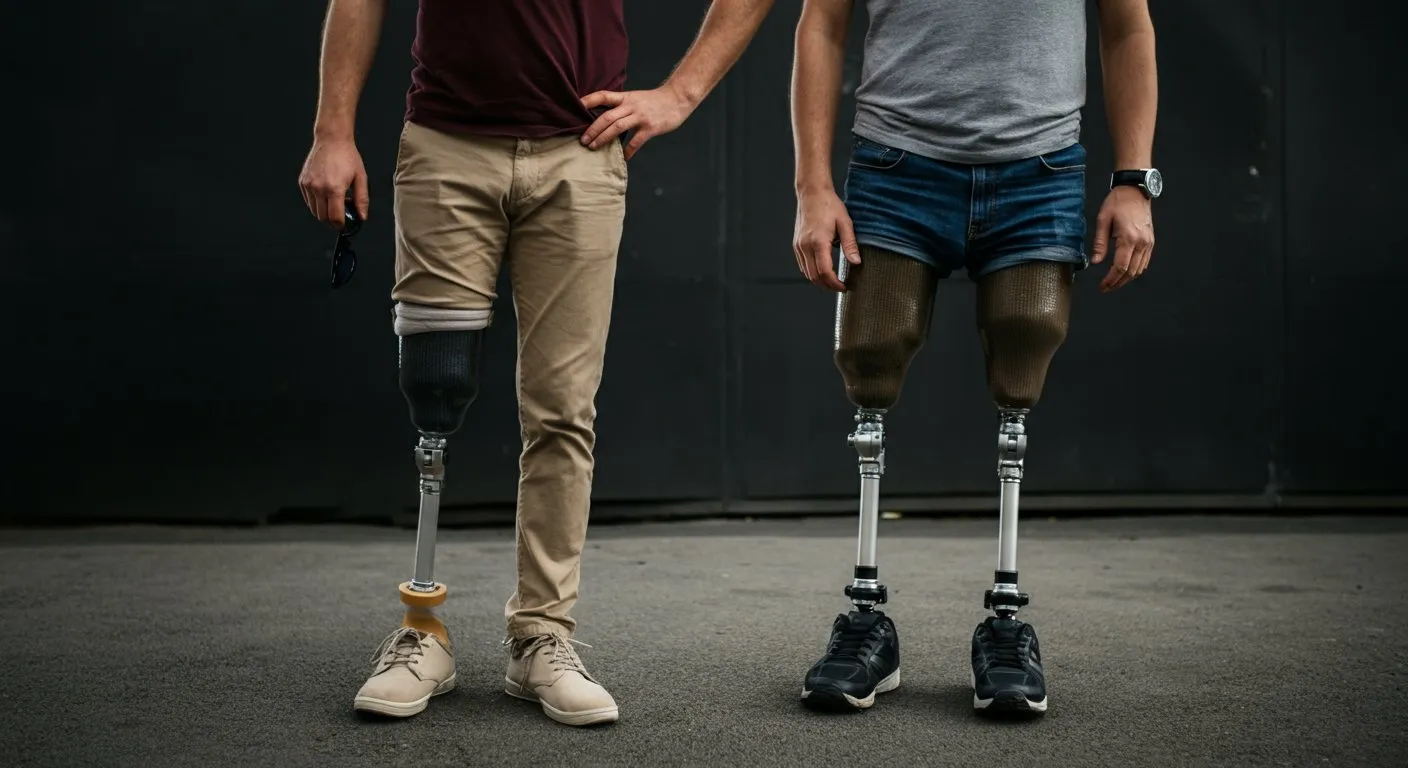Choosing the best prosthetic foot for hiking isn’t just about the brand or cost. It’s about how the foot fits your body and supports your hikes. Every trail demands a different level of comfort, strength, and control. At OP Center, we focus on helping hikers find a solution that feels right from the very first step.
Some hikers lean toward lightweight models for ease. Others need more durability to handle rocky climbs. But how do you know what’s right for you? Let’s walk through your options—step by step.
Why Picking the Right Prosthetic Foot Is Critical
Hiking already takes strength, stamina, and planning. Add a prosthetic foot, and the challenge increases. The wrong model may slow you down, strain your joints, or even cause injury. The right one? It lets you move with confidence and comfort.
Also, hiking with a well-fitted prosthetic helps keep your gait balanced. It reduces stress on your knees, hips, and lower back. Many hikers say the right foot makes their entire body feel better during and after a hike.
Moreover, the wrong foot can cause discomfort fast. If it’s too soft, your steps feel unstable. If it’s too heavy, it can drag you down. That’s why choosing carefully matters.
Lightweight Prosthetic Feet: Ideal for Smooth Trails
Many hikers prefer a lightweight prosthetic for a reason. These feet feel natural and make walking easier. Often made with carbon fiber or high-grade plastics, they reduce leg fatigue and keep you going longer.
Carbon fiber designs, in particular, give excellent energy return. They bounce slightly with each step. This helps reduce pressure on your knee and gives a smoother stride.
Additionally, these feet are great for everyday hikes or flat trails. You can move fast, walk longer, and feel less tired. Many people say they forget they’re wearing a prosthetic at all.
However, there are downsides. Lightweight models may wear out quicker, especially on rough trails. They might not provide enough grip or support when walking across rocky ground.
If you hike with a heavy pack, a lightweight foot might not give you enough control. So, they work well in mild conditions—but might fall short on steep or uneven ground.
Durable Prosthetic Feet: Built for Tough Terrain
When you’re hiking rocky hills or slippery slopes, durability becomes key. A stronger foot handles impact better and offers a safer hike. These feet often include titanium, reinforced plastics, or rubberized soles.
Also, durable prosthetic feet are designed to last. They resist cracking and don’t wear out as fast on rough paths. For hikers who go off-trail or climb mountains, these are often the better pick.
Additionally, many heavy-duty prosthetic feet come with shock-absorbing features. This helps reduce stress on your residual limb and lowers the risk of joint pain.
The added strength means extra weight, though. Hikers with shorter trips might feel tired faster using these models. Still, most agree that the support and grip make the weight worth it.
Moreover, they perform well in extreme weather. Wet trails, snow, and mud are less of a problem with these designs.
Can One Foot Offer Both Strength and Lightness?
Hybrid designs aim to do just that. These feet combine the best parts of both lightweight and durable models. Some use carbon fiber with a rugged frame. Others feature adjustable springs for heel or ankle motion.
These new models allow hikers to change the tension depending on the trail. Some even adjust automatically to the terrain. This provides a smoother walk, whether you’re on dirt, rock, or grass.
Also, hybrid feet support better ankle movement. This helps keep your balance when walking up or downhill. Several hikers say they felt less knee pain after switching to these models.
Moreover, many of these options weigh less than full-strength models while offering almost the same durability. They’re becoming a popular choice for serious hikers.
Match the Foot to the Terrain
Your choice should depend on where you hike most. Each trail presents different challenges. Here’s what to consider:
- Flat or paved trails: Go for lightweight feet. They reduce fatigue and keep you moving smoothly.
- Hilly or rocky areas: Choose a durable foot for better grip and balance.
- Wet or muddy paths: Make sure the foot has traction and water-resistant materials.
- High-altitude climbs: Use a hybrid with good ankle movement and spring support.
Additionally, test the foot on terrain similar to your favorite trail. Try a short walk or day hike to see how it performs.
Adjusting for Fit Makes All the Difference
Even the best prosthetic foot for hiking won’t work well if it’s not adjusted to your body. Proper fit is just as important as design. The socket, alignment, and suspension all play a role.
Also, choose hiking boots that work with your prosthetic. Some users size up for a better fit. Others add inserts to balance out both sides.
Moreover, many prosthetic feet allow easy adjustments. You can fine-tune tilt, alignment, or tension using small tools or mobile apps. This helps reduce soreness and keeps you walking comfortably.
Real Feedback from Outdoor Users
We’ve heard dozens of stories from hikers who’ve used different types of prosthetic feet. One man told us how his carbon fiber foot made it easy to hike ten miles with no pain. Another said he preferred his stronger model after his lightweight one broke on a trail.
A woman shared how her hybrid foot handled a steep trail covered in snow. It gave her enough support without weighing her down. Her feedback helped us refine future models.
These stories remind us that every trail is different. What works for one person might not work for another. Still, each hiker deserves a foot that fits their journey.
Features to Look for in a Hiking Prosthetic
When choosing the best prosthetic foot for hiking, keep an eye out for these features:
- Energy return: Reduces fatigue on long walks
- Good grip: Prevents slipping on rocks or wet trails
- Water resistance: Keeps the foot working in rain or mud
- Ankle flexibility: Helps when climbing or descending hills
- Weight capacity: Supports your full body weight plus gear
- Low maintenance: Reduces the need for frequent repairs
Also, always consult your prosthetist before making a decision. They’ll help match the model to your needs and walking habits.
Conclusion
Choosing the best prosthetic foot for hiking takes time, research, and a little testing. Some feet are light and easy. Others are strong and steady. A few offer both. The best option for you depends on how and where you hike.
Whether you’re walking scenic trails or climbing rugged paths, you deserve a foot that works with your body—not against it. At OP Center, we help hikers find the right balance of comfort, function, and strength.
Because on the trail, every step should feel like progress.



